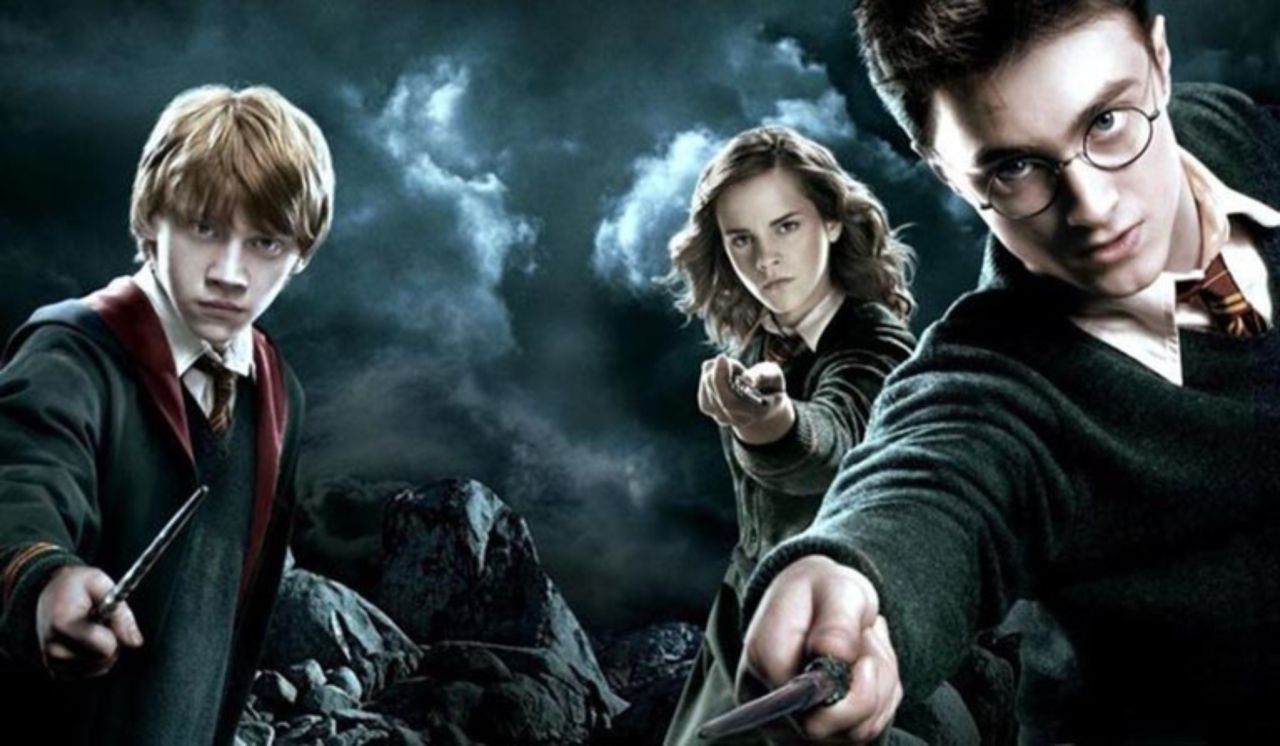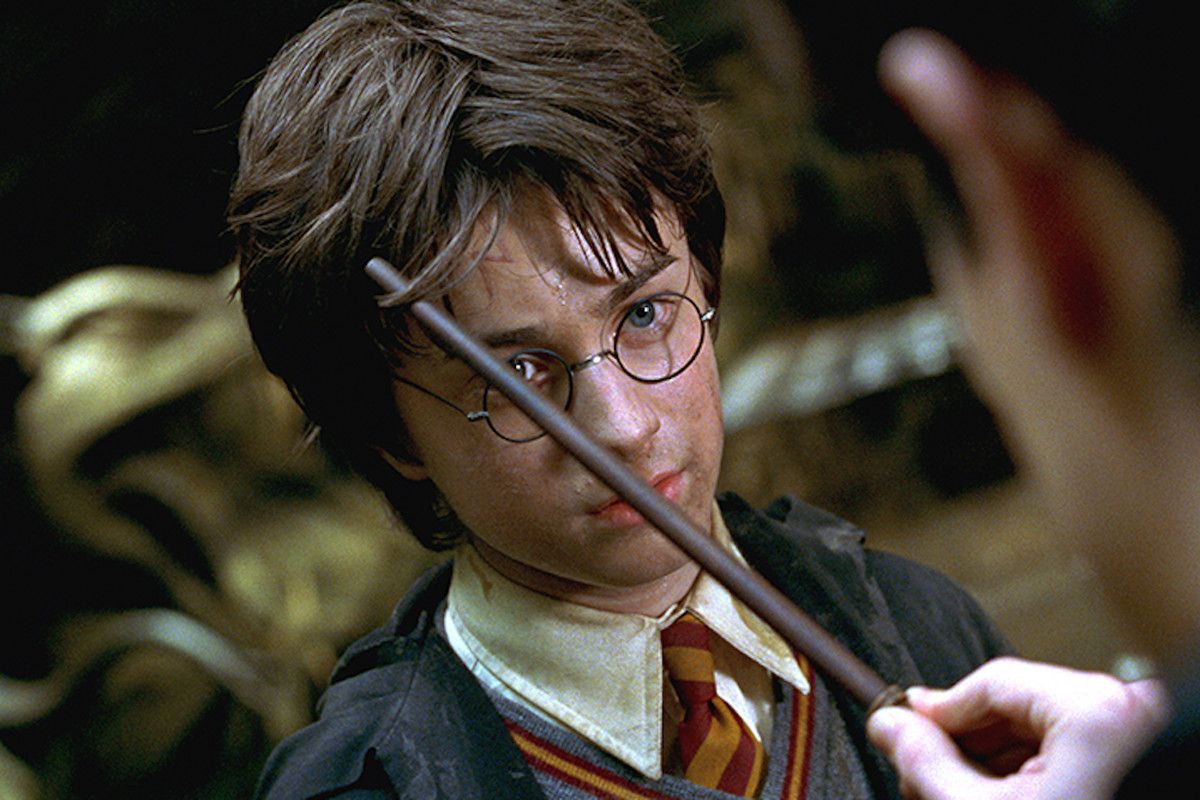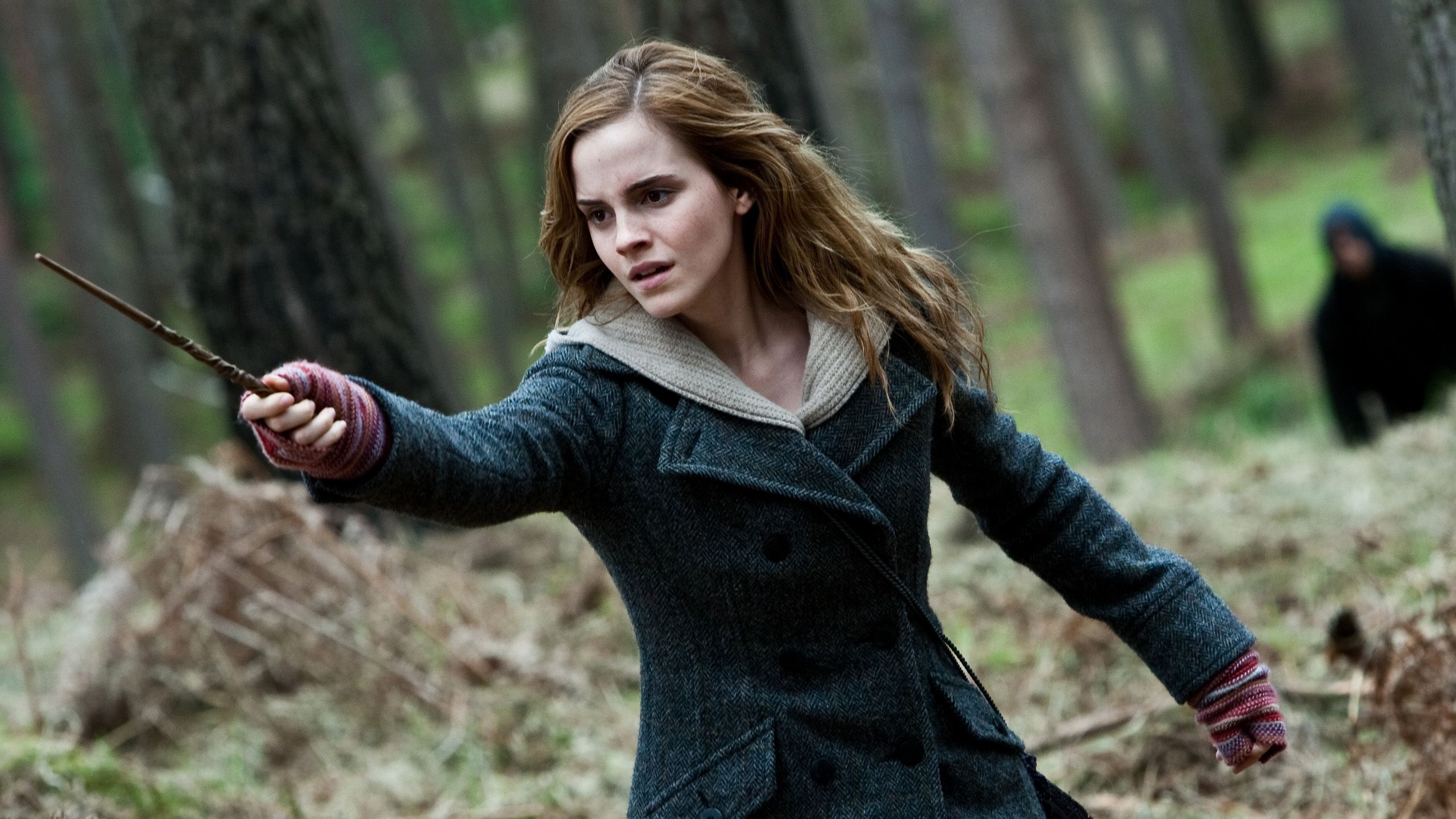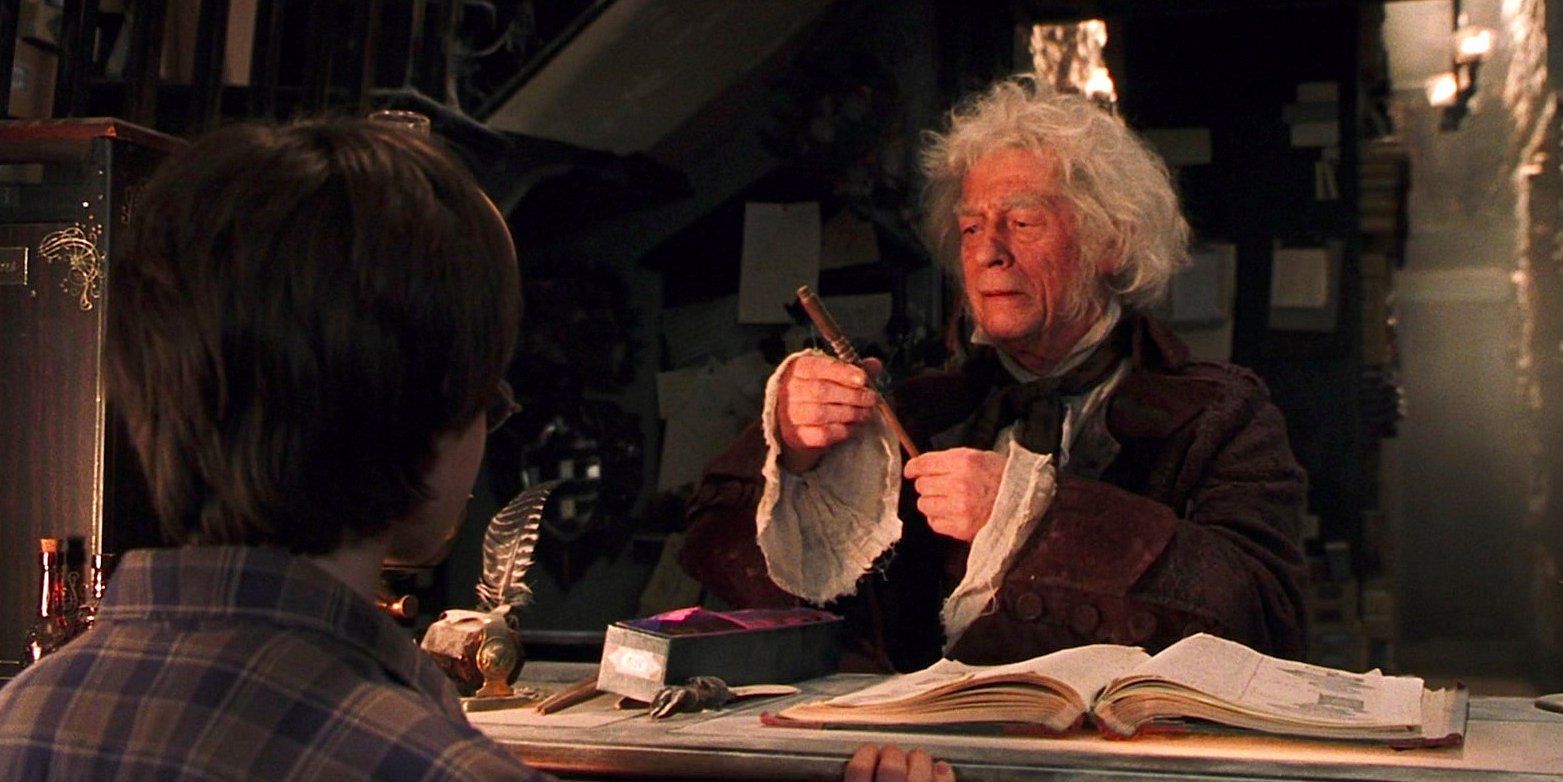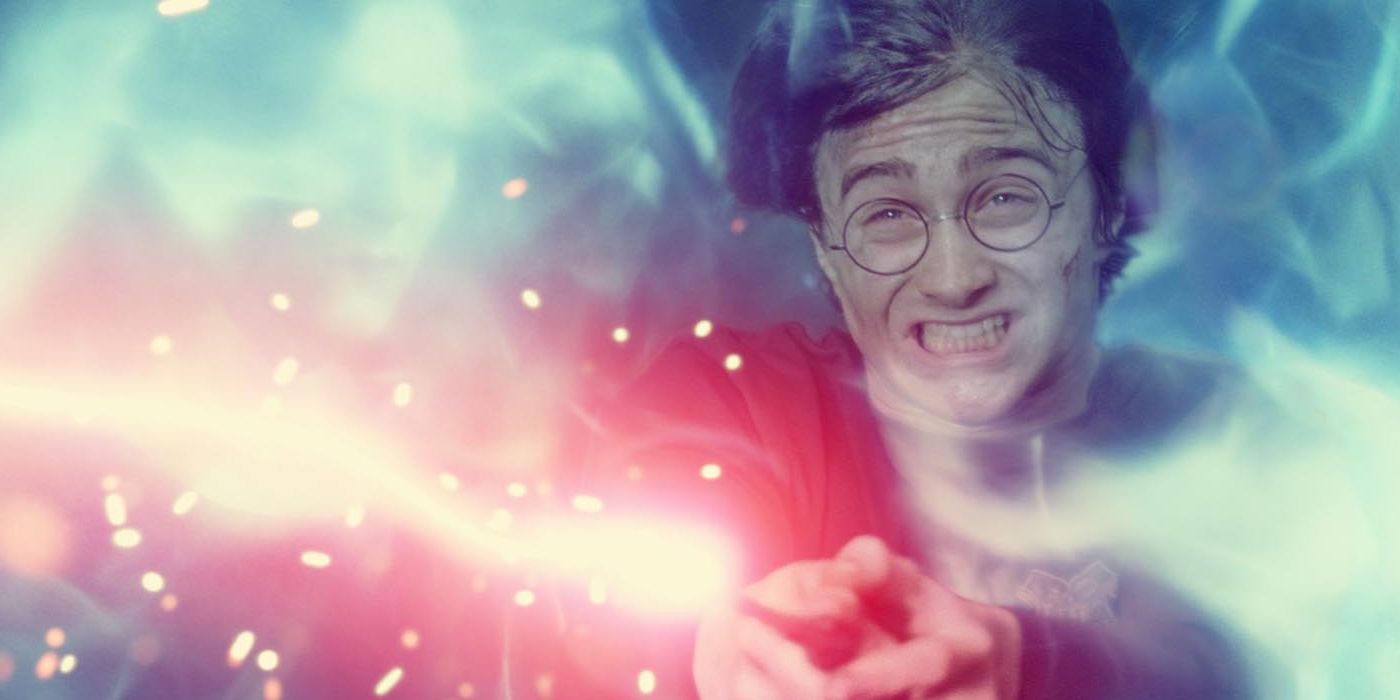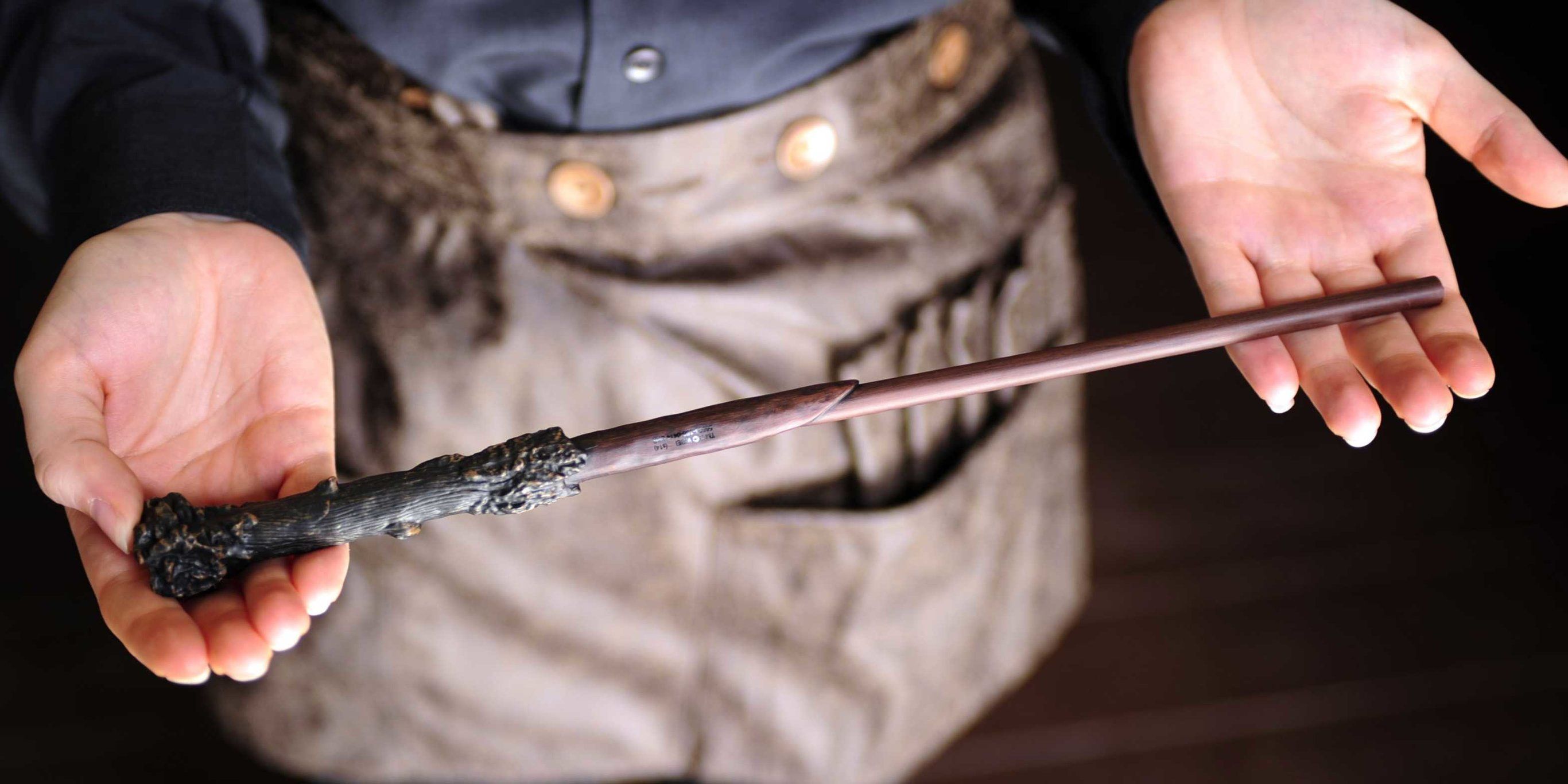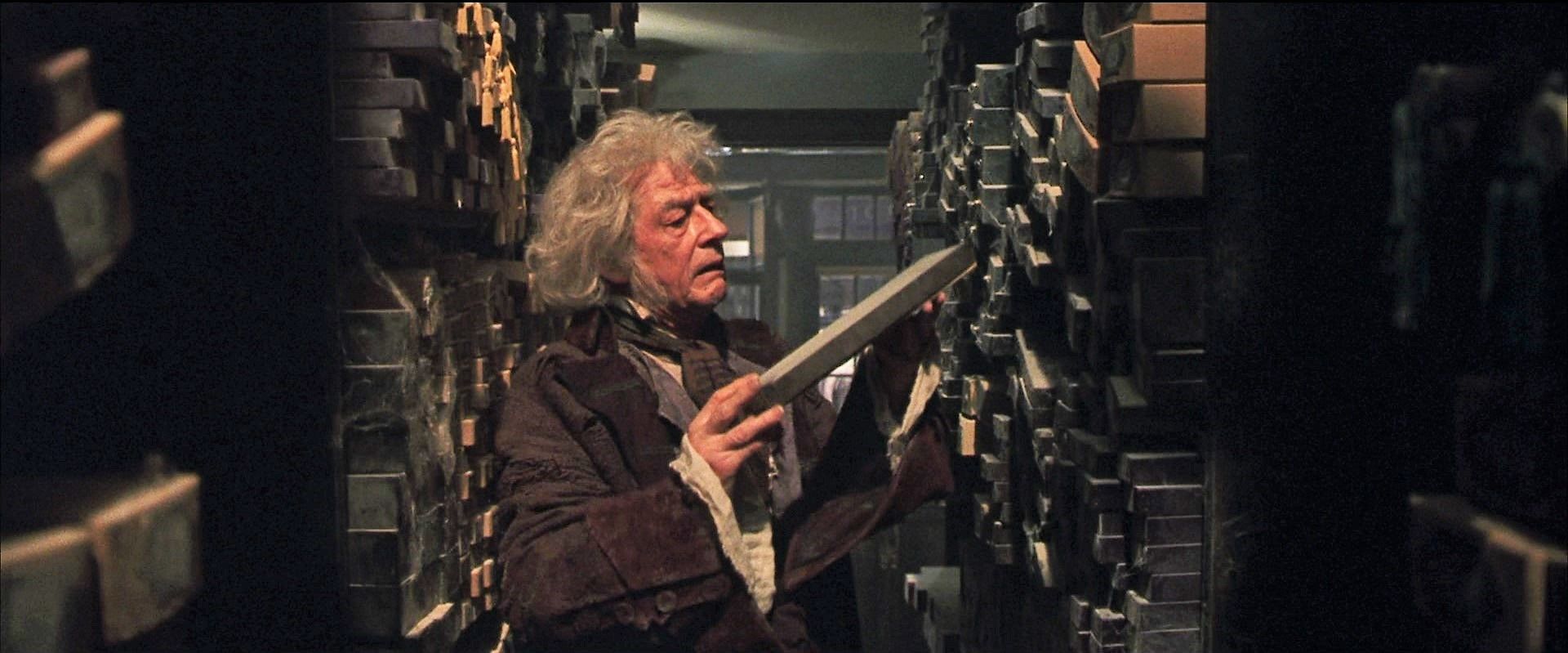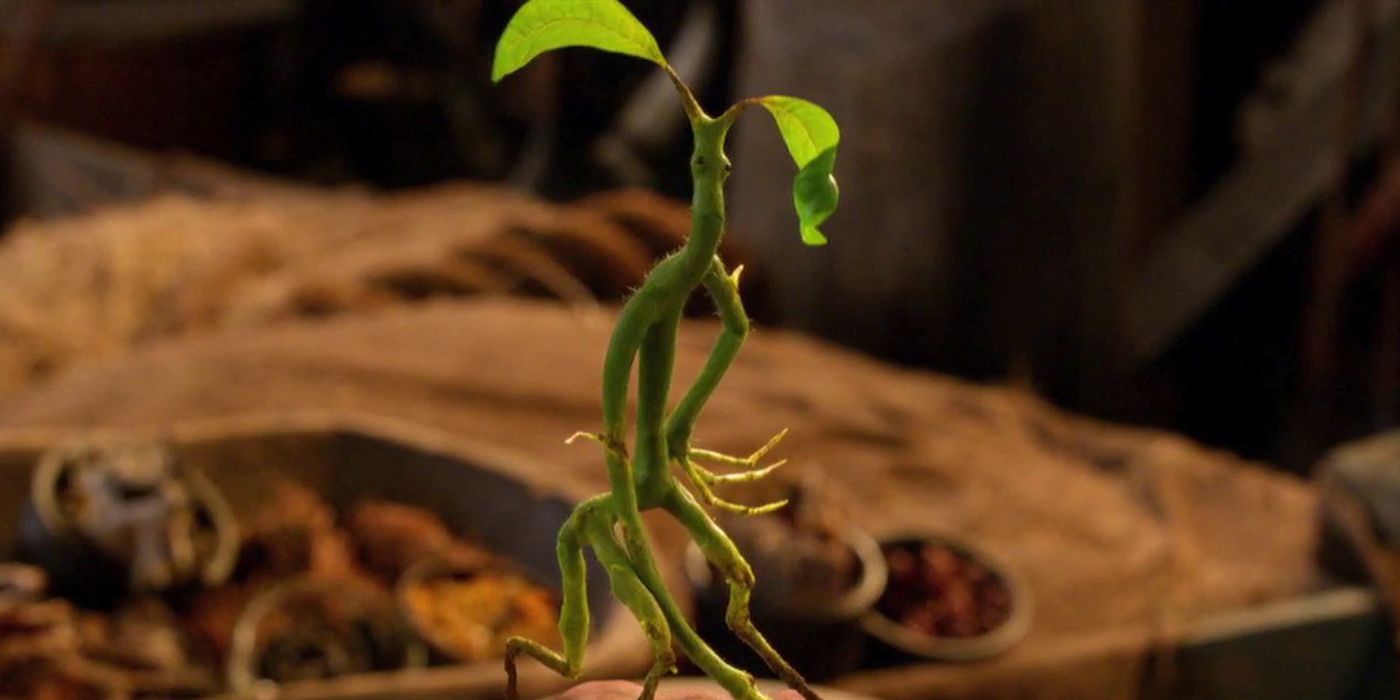You don't have to be a Potterhead to know that wands play a HUGE role in the Harry Potter universe! Wandlore, which was introduced to the fandom by author J.K. Rowling, is an ancient, and complex branch of magic dealing with the history, abilities, and actions of wands.
RELATED: Harry Potter: 15 Things You Didn’t Know About Wands
According to wand maker Ollivander, who studies wandlore extensively, wands are mysterious, magical tools that are complex and almost impossible to fully understand. In other words, there's probably a lot you still don't know about the wands used by your favorite wizards and witches, but would you like to know more? Here are 10 facts about the wands in the Harry Potter universe to get you started.
10. The Wand Chooses The Wizard
According to Garrick Ollivander in 'Harry Potter And The Deathly Hallows', the greatest wandmaker in the world, it's the wand that does the picking.
"The wand chooses the wizard," Ollivander explains. "That much has always been clear to those of us who have studied wandlore... If you are any wizard at all you will be able to channel your magic through almost any instrument. The best results, however, must always come where there is the strongest affinity between wizard and wand. These connections are complex. An initial attraction, and then a mutual quest for experience, the wand learning from the wizard, the wizard from the wand."
RELATED: 20 Harry Potter Wands, Ranked From Weakest To Strongest
9. A Wand Channels The Witch Or Wizard's Power Or Abilities
In the Harry Potter universe, a wand is a quasi-sentient magical instrument through which a witch or wizard channels her or his magical powers. Although magic can be done without a wand, it requires a lot of concentration and a higher level of skill and power. Like an athlete that may have the right body type for a particular sport, wizards and witches can have a particular "talent" for a certain kind of magic. Dumbledore, for example, admits to having no talent with divination, while Harry excels in Defense Against the Dark Arts.
RELATED: Alohomora! 10 Weird Rules About Magic In Harry Potter
8. Flexibility Is Important
Many fans have always assumed that all wands were rigid and straight, but apparently, the flexibility of a wand makes a great deal of difference! According to Ollivander, a wand's flexibility "denotes the degree of adaptability and willingness to change possessed by the wand-and-owner pair." So what does that mean, exactly? A flexible wand will adapt to spells more quickly than a rigid one, but it's also quicker to switch allegiances if the owner is defeated. I think I'd prefer a more loyal one, personally.
7. "Brother Wands" Are A Thing
Although no two wands are exactly the same, "brother wands" happen when two wands share a core from the same source. The wands of Harry and Voldemort, for example, each had a phoenix feather core taken from the tail of Albus Dumbledore's companion phoenix, Fawkes. As a result, these two wands could not be used successfully in a fight with one another. When Voldemort dueled against Harry, the spells from both wands locked in mid-air and the "losing" wand was forced regurgitate echoes of previous spells it has performed (called Priori Incantatem). However, when twin wand cores are used in tandem against a common enemy, their power "increases tenfold."
RELATED: Harry Potter: The 15 Most Powerful Magical Artifacts, Ranked
6. Size Matters
Wands come in a range of lengths, with the longest wand being 18″ long and belonging to the Malfoy family. Although one's stature (both literally and figuratively) is often associated with the length of one's wand, Ollivander cautions against it.
"Many wandmakers simply match the wand length to the size of the witch or wizard who will use it, but this is a crude measure, and fails to take into account many other, important considerations. In my experience, longer wands might suit taller wizards, but they tend to be drawn to bigger personalities, and those of a more spacious and dramatic style of magic. Neater wands favor more elegant and refined spell-casting."
5. Wands Have Allegiances
A new witch or wizard will traditionally pick out a number of "virgin" wands at Ollivander's Wand Shop until they eventually find the one that will give its allegiance to (or "choose") them. Although it is possible to procure a wand by "winning it" from its master, wands will usually retain some fealty to the original owner. Some wands bend quite easily to a new master while others are fiercely loyal. The Elder Wand, however, is "completely unsentimental" and will only be loyal to strength.
Related: Harry Potter: 20 Things Severus Snape Did Before The Books
4. Wands Have Magical Cores
The core of a wand is a magical substance that has been placed in the length of the wood, which can be anything from unicorn hair, dragon heartstring, or Phoenix feathers. Unicorn hair wands are the most difficult to turn to the Dark Arts, but dragon heartstrings are the easiest. Phoenix feather wands (used by Harry Potter and Lord Voldemort) have the widest range of magic and are the rarest. "Inferior" substances used for wands include Kneazle whiskers, Kelpie hair, and Troll whiskers.
3. Different Woods Have Different Personalities
The type of wood used for a wand often reflects the type of witch or wizard that will end up using it, as they are said to have "personalities" that often bear close resemblances to the person they choose. Applewood wands, for example, are suited for those with a great deal of charm and charisma, blackthorn wands are used for "warrior types," and according to Ollivander, cypress wand owners are the most likely to die a heroic death. Interestingly, Lord Voldemort and Ginny Weasley both have yew wands, which are said to favor both dark wizards and fierce protectors of others.
RELATED: Harry Potter: 20 Things Hermione Did Between Deathly Hallows And Cursed Child
2. Not Just Any Tree Will Do
According to Garrick Ollivander's notes about the powers and properties of various wand woods, not every tree is capable of producing magical wands.
"Only a minority of trees can produce wand quality wood (just as a minority of humans can produce magic)," reads one passage. "It takes years of experience to tell which ones have the gift, although the job is made easier if Bowtruckles are found nesting in the leaves, as they never inhabit mundane trees."
Good to know.
1. The Elder Wand Is Special
The Elder Wand is one of three objects that make up the fabled Deathly Hallows, so it's not just any other wand. This sucker is said to be the most powerful wand that has ever existed, able to perform feats of magic that would normally be impossible even for the most skilled wizards, such as mending another wand damaged beyond normal magical repair. The Elder Wand's core is the tail hair of a Thestral, "a tricky substance that only wizards that mastered death can control."

